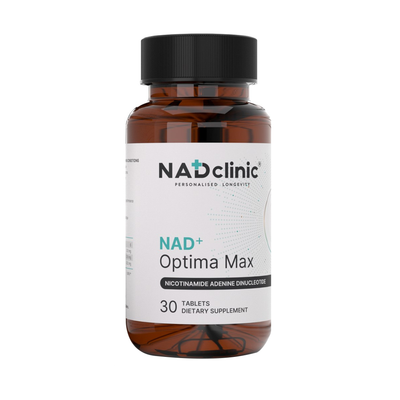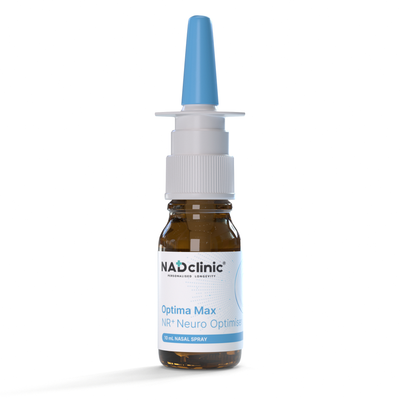في الفترة التي تلي الجري لمسافات طويلة وشاقة، يبدأ الألم المألوف في الظهور. يعلم معظمنا أن البروتين والراحة والتمدد الجيد ضروريان للتعافي - ولكن هناك المزيد يحدث تحت السطح والذي يمكن أن يعطي جسمك دفعة إضافية.
تعرّف على NAD+، وهو جزيء قوي موجود طبيعيًا في الجسم ويلعب دورًا أساسيًا في مساعدة العضلات على التعافي وإعادة البناء. في هذه المدونة، سنتناول بالتفصيل كيف يدعم NAD+ تجديد العضلات، ولماذا قد يكون الحل الأمثل في حقيبة تعافيك، لمساعدتك على الاستعداد لموسم الماراثون القادم.
ما هو NAD+؟
NAD+ (نيكوتيناميد أدينين ثنائي النوكليوتيد) هو إنزيم مساعد موجود في كل خلية حية، ويلعب دورًا أساسيًا في الحفاظ على سلاسة عمل أجسامنا. فهو يساعد على إنتاج الطاقة، وإصلاح الحمض النووي التالف، ويدعم وظائف الخلايا السليمة - وهي كلها أمور أساسية لصحة العضلات وتعافيها.
بعد التمرين، تتعرض عضلاتك لتمزقات مجهرية في أليافها. هذا جزء طبيعي من عملية بناء العضلات. يُشغّل NAD+ أنظمة الإصلاح التي تُعالج هذه التمزقات. فهو يدعم الميتوكوندريا (مصانع الطاقة في خلاياك) ويساعد على تنشيط المسارات المسؤولة عن إصلاح العضلات وتجديدها. باختصار، يُزوّد NAD+ جسمك بالطاقة والأدوات اللازمة للتعافي بشكل أسرع وأكثر فعالية.
ومع ذلك، مع تقدمنا في السن، تنخفض مستويات NAD+ بشكل طبيعي. هذا قد يُبطئ عملية التعافي، ويُضعف أداء العضلات، ويُساهم في فقدان العضلات المرتبط بالعمر - وهو أمرٌ بعيدٌ كل البعد عن الحالة المثالية للحفاظ على النشاط والقوة.
تجديد العضلات 101
أثناء النشاط البدني، تتشكل تمزّقات صغيرة في ألياف العضلات. يبدأ التعافي أثناء الراحة، عندما يعمل الجسم على إصلاح هذه الألياف وتقويتها، مما يجعلها أقوى في المرة القادمة. تبدأ عملية الشفاء هذه بالخلايا الساتلية، وهي نوع من الخلايا الجذعية العضلية التي تنشط لإعادة بناء الأنسجة التالفة.
يحدث الالتهاب أيضًا كجزء من هذه العملية، إلى جانب زيادة تخليق البروتين - وهي طريقة جسمك لإنتاج بروتينات عضلية جديدة لتحل محل البروتينات التالفة. هذا المزيج من الإصلاح وإعادة البناء هو ما يؤدي إلى تقوية العضلات.
هنا يأتي دور NAD+ الكبير. فهو يدعم وظيفة الميتوكوندريا، ويساعد على إنتاج الطاقة اللازمة للإصلاح. كما يُساعد على تنظيم الالتهابات وتنشيط الجينات الرئيسية المسؤولة عن تجديد العضلات، وكلها عوامل تُعزز التعافي بشكل أسرع وأكثر فعالية.
تعزيز مستويات NAD+
الخبر السار؟ يمكنك دعم وتعزيز مستويات NAD+ لديك بشكل طبيعي، وممارسة الرياضة في الواقع من أفضل الطرق لتحقيق ذلك. فالتمارين عالية الكثافة تزيد من احتياجات جسمك من الطاقة، فلماذا لا تُدرج الركض السريع أو رفع الأثقال في برنامجك التدريبي؟ هذا بدوره يُعزز إنتاج الميتوكوندريا ويزيد مستويات NAD+ للمساعدة في تلبية احتياجات الطاقة هذه، مما يُحسّن الأداء والتعافي.
الصيام المتقطع طريقة فعّالة أخرى لزيادة مستوى NAD+. بتحويل جسمك من حرق السكر إلى حرق الدهون، يُحفّز الصيام إنتاج NAD+ ويُقلّل من تحلل هذا الجزيء الأساسي. كما يُنشّط الصيام السيرتوينات - وهي بروتينات تعتمد على NAD+ لإصلاح الخلايا وتقليل الالتهابات - مما يعني استخدامًا أكثر كفاءة للطاقة وتحسينًا لصحة الخلايا.
وأخيرًا، يُمكن لنظام غذائي متوازن أن يُحدث فرقًا كبيرًا. فالأطعمة الغنية بمركبات NAD+، مثل فيتامين B3 (الموجود في اللحوم والأسماك والبيض والمكسرات والخضراوات الورقية) والتريبتوفان (الموجود في الديك الرومي ومنتجات الألبان والشوفان)، تُساعد جسمك على إنتاج المزيد من NAD+ بشكل طبيعي. ويضمن دعم نظامك الغذائي بهذه العناصر الغذائية الأساسية حصول جسمك على ما يحتاجه للحفاظ على مستويات صحية من NAD+.
إذا كنت ترغب في تعزيز التعافي بما يتجاوز التدريب والنظام الغذائي، فإن مكملات NAD+ قد تكون مفيدة للغاية. تقدم NADclinic NAD+ المحسن Optima Max، مصمم لدعم إنتاج الطاقة وتقليل الالتهاب وتسريع إصلاح العضلات من خلال جرعة قوية تبلغ 250 مجم من NAD+.
من أجل نهج أكثر استهدافًا، ريسفيراترول نقي قد يكون هذا المكمل الغذائي المُركّب من NR هو الأنسب لك. يدعم هذا المكمل الغذائي الإنتاج الطبيعي لـ NAD+ ويكافح الإجهاد التأكسدي، مما يجعله مثاليًا للتعافي والأداء والشيخوخة الصحية.
خاتمة
مع أنه لا يوجد حل سحري لاستعادة العضلات، إلا أن تعزيز مستويات NAD+ في جسمك يُحدث فرقًا كبيرًا في تدريبك. من تعزيز إنتاج الطاقة إلى المساعدة في إصلاح ألياف العضلات، يلعب هذا الجزيء الصغير دورًا بالغ الأهمية في كيفية تعافينا بعد التمارين الشاقة. سواء كنت تسعى لتحقيق أفضل أداء شخصي، أو تستعد لماراثون أو ببساطة تريد أن تشعر بأفضل ما لديك - فإن فهم تزويد جسمك بالوقود على المستوى الخلوي قد يكون الميزة الإضافية التي تحتاجها.
المنتجات المميزة
اكتشف العناصر الأكثر شعبية لدينا
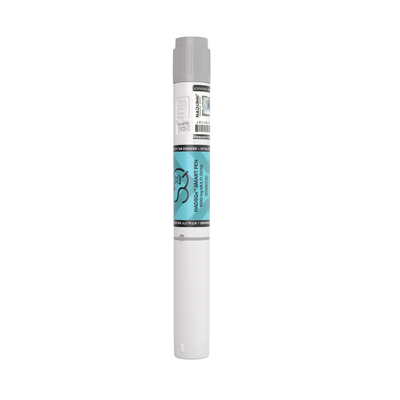
NADSQx قلم ذكي 1000 ملغ

مجموعة اختبار مستويات NAD+
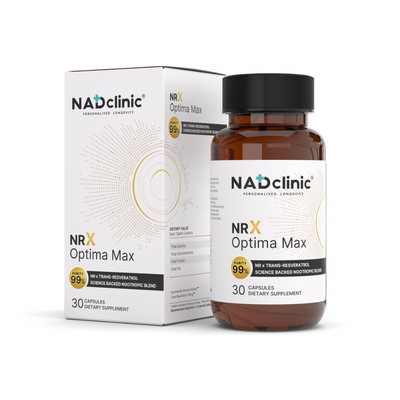
NRx أوبتيما ماكس
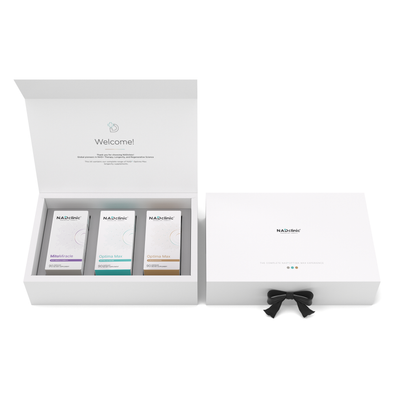
مجموعة هدايا أوبتيما ماكس
اقرأ المزيد

دعونا نستكشف بالضبط ما هو NAD+ والطرق الرائعة التي يمكنه من خلالها تحسين جودة نومك.

في هذه المدونة، سنستكشف كيف يدعم NAD+ الطاقة والتعافي، ولماذا يميل إلى الانخفاض (خاصةً عندما تكون الحياة مليئة بالعمل)، وكيف يمكنك إعطاء مستوياتك دفعة سريعة وفعالة دون الحاجة إلى التوقف.



